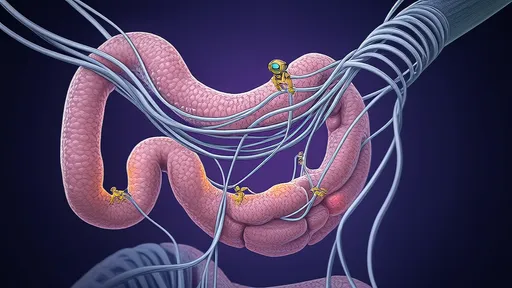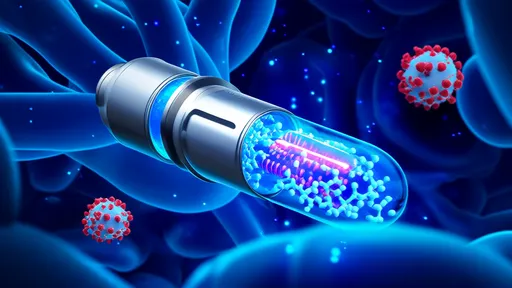The rise of antibiotic-resistant bacteria has become one of the most pressing public health crises of our time. Traditional antibiotics, once hailed as miracle drugs, are increasingly ineffective against evolving bacterial strains. In this landscape, scientists are turning to innovative solutions—one of the most promising being the CRISPR-Phage Missile System, a groundbreaking approach that leverages the precision of CRISPR gene-editing technology and the natural lethality of bacteriophages to target and eliminate resistant bacteria with unprecedented accuracy.
The CRISPR-Phage Alliance: A New Weapon Against Superbugs
Bacteriophages, or phages for short, are viruses that specifically infect and kill bacteria. They have been used therapeutically for nearly a century, particularly in Eastern Europe, where phage therapy has long been an alternative to antibiotics. However, the real breakthrough comes with the integration of CRISPR-Cas systems into these phages. CRISPR, known for its gene-editing capabilities, can be programmed to seek out and destroy specific DNA sequences within bacterial cells. When combined with phages, this creates a "smart missile" system that not only infects harmful bacteria but also ensures their genetic destruction, leaving beneficial microbes untouched.
The elegance of this system lies in its specificity. Unlike broad-spectrum antibiotics that wipe out both harmful and beneficial bacteria, CRISPR-phage missiles can be tailored to attack only the targeted resistant strains. For instance, if a patient is infected with a methicillin-resistant Staphylococcus aureus (MRSA), the phage can be engineered to deliver CRISPR machinery that cuts the bacterial DNA at the exact location of the resistance gene, rendering the pathogen defenseless and unable to survive.
How the CRISPR-Phage Missile Works
The process begins with the identification of the resistance genes in the target bacteria. Once these genetic markers are known, researchers design CRISPR guide RNAs (gRNAs) that match the sequences of these genes. These gRNAs are then packaged into the phage particles, which serve as the delivery vehicles. When the phages infect the bacteria, they inject their payload—CRISPR-Cas enzymes guided by the custom-designed gRNAs. The Cas enzyme acts like molecular scissors, cutting the bacterial DNA at the specified resistance gene, leading to fatal damage.
What makes this approach particularly powerful is its adaptability. As bacteria evolve new resistance mechanisms, the CRISPR-phage system can be quickly reprogrammed to target the updated genetic signatures. This dynamic response capability is a significant advantage over traditional antibiotics, which often take years to develop and may become obsolete due to bacterial evolution.
Challenges and Ethical Considerations
Despite its promise, the CRISPR-phage missile system is not without challenges. One major hurdle is the delivery efficiency. Ensuring that phages reach their intended targets in sufficient numbers within the human body remains a technical obstacle. Additionally, the potential for off-target effects—where CRISPR might inadvertently edit non-resistant bacteria or even human cells—requires rigorous testing to minimize risks.
Ethically, the use of genetically modified phages raises questions about long-term ecological impacts. Releasing engineered viruses into the environment, even for therapeutic purposes, could have unforeseen consequences on microbial ecosystems. Regulatory frameworks will need to evolve alongside the technology to ensure safe and responsible deployment.
The Future of Precision Bacteriotherapy
As research progresses, the CRISPR-phage missile system could revolutionize how we treat bacterial infections. Early laboratory studies and animal trials have shown remarkable success, with targeted elimination of resistant bacteria without collateral damage to the microbiome. Clinical trials in humans are the next critical step, and several biotech companies are already investing heavily in this direction.
Beyond treating infections, this technology holds potential for preventive applications. Imagine a scenario where high-risk patients, such as those undergoing surgery, receive prophylactic CRISPR-phage treatments to preemptively eliminate potential resistant pathogens. The possibilities are vast, and the implications for global health are profound.
In the arms race between humans and bacteria, the CRISPR-phage missile system represents a paradigm shift—a move from brute-force antibiotics to precision strikes against the root causes of resistance. While challenges remain, the fusion of CRISPR and phage therapy may well be the key to turning the tide in our favor.

By /Aug 14, 2025

By /Aug 14, 2025

By /Aug 14, 2025

By /Aug 14, 2025

By /Aug 14, 2025

By /Aug 14, 2025

By /Aug 14, 2025

By /Aug 14, 2025

By /Aug 14, 2025

By /Aug 14, 2025

By /Aug 14, 2025

By /Aug 14, 2025

By /Aug 14, 2025

By /Aug 14, 2025

By /Aug 14, 2025

By /Aug 14, 2025

By /Aug 14, 2025

By /Aug 14, 2025

By /Aug 14, 2025

By /Aug 14, 2025